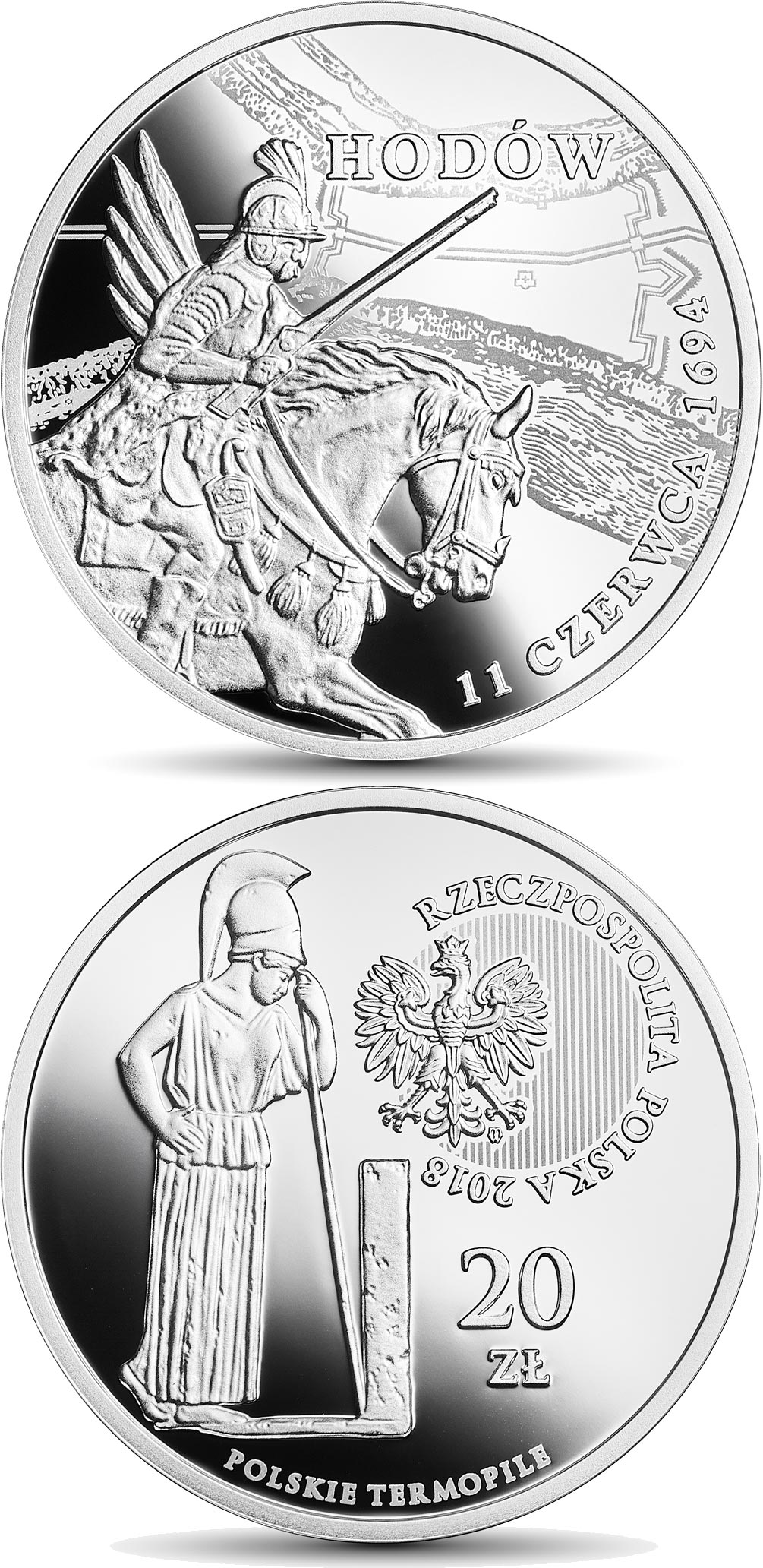20 zloty – Hodów
Series: Poland – The Polish Thermopylae

Hodów, a village near Pomoryany, about 80 km
from Lviv (in the borderland between Halych Land
and Podolia; at the present a village in Ternopil
Oblast (province) in Ukraine). It is here that on
11 June 1694 a historical battle took place between
a cavalry group of the Polish Crown army and the
Tatar troops intending to launch a sabotage raid
on the Ruthenian Voivodship. Polish forces consisted of cavalry banners from
the garrison: Okopy Świętej Trójcy (Holy Trinity
Trenches) (at the mouth of the Zbruch River
near Kamianets-Podilskyi), among which there
were almost 100 hussars and maybe 300 mediumcavalrymen
(pancerni). They were commanded
by Konstanty Zahorowski. The Okopy forces were
supported by 200 Mikołaj Tyszkowski’s cavalrymen
from other border fort – Szaniec Panny Marii
(Virgin Mary Rampart). Zahorowski’s subordinates
distinguished by excellent defensive skills and
fortitude. Enemies called them “undefeated men”. The group of cavalry from Okopy, called by their
contemporaries “elears from Okopy”, cut across the
path of the Tatar invasion near Hodów. Due to the
number of the enemy’s troops, estimated by some
witnesses at 40 thousand soldiers, the “elears from
Okopy” garrisoned rural buildings from where
they defended themselves against the Tatars, on
foot and using long firearms. Interestingly, when
they had run out of bullets, they loaded their arms
with heads of Tatar arrows, which hailed down in
a huge amount during several-hour-long exchange
of fire. According to contemporary reports, all Polish
soldiers were wounded during the defence. Despite
this, the soldiers from Okopy did not surrender, and
the Tatars withdrew, discouraged by the conduct of
Zahorowski’s subordinates. Thus their sabotage raid
had proved futile. The valiant defenders of Hodów were compared, even
in their own times, to the 300 Spartans defending
Thermopylae. John III Sobieski, the King of Poland,
commissioned a monument commemorating their
victory. “They fulfilled their need to demonstrate a steadfast attitude as Spartans did against
Persians”, as a hussar, Kazimierz Dłużewski,
commented on the soldiers’ attitude.
Explore the coin
The reverse presents a hussar companion sent to “elears from Okopy”. The image of the hussar in full armour, wearing a leopard pelt, with a wheel lock arquebus and 2 wheel lock pistols (according to the guidelines of Stanisław Jabłonowski, Great Crown Hetman, from 1693, on armour and weaponry of Polish hussars from “trench banners”) has been placed against the background of a rough drawing depicting fortification of Okopy Świętej Trójcy. The obverse of all coins of the “The Polish Thermopylae” series depicts Athena, the Goddess of just war and wisdom. Zbigniew Hundert, Ph.D.
Explore the coin
The reverse presents a hussar companion sent to “elears from Okopy”. The image of the hussar in full armour, wearing a leopard pelt, with a wheel lock arquebus and 2 wheel lock pistols (according to the guidelines of Stanisław Jabłonowski, Great Crown Hetman, from 1693, on armour and weaponry of Polish hussars from “trench banners”) has been placed against the background of a rough drawing depicting fortification of Okopy Świętej Trójcy. The obverse of all coins of the “The Polish Thermopylae” series depicts Athena, the Goddess of just war and wisdom. Zbigniew Hundert, Ph.D.
